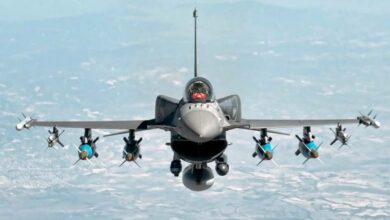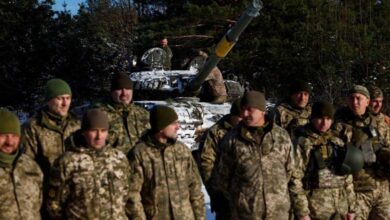Global Thunder 26: a comprehensive U.S. test of nuclear deterrence

The United States has launched its “Global Thunder 26” military drills, described as the most extensive nuclear exercise of the year. Conducted at Offutt Air Force Base in Nebraska, these maneuvers come amid intensifying strategic competition between the U.S., Russia, and China. Their main purpose is to demonstrate America’s nuclear capabilities and test the efficiency of its command, control, and communication systems in a simulated global conflict scenario.
-
The Russian Harmony system: A secret ploy to shield nuclear submarines
-
The deal is over: Iran no longer bound by nuclear restrictions
According to Military Watch Magazine, units from multiple branches of the U.S. Armed Forces involved in nuclear deterrence participated in the drills. The exercises included extensive strategic bomber flights, ballistic missile tests, and readiness training for nuclear-powered submarines.
In its official statement, U.S. Strategic Command said the exercise aims to strengthen the combat readiness of nuclear forces, assess decision-making processes and communication networks under potential crisis conditions, and reinforce the doctrine of “peace through strength” while reassuring global allies and partners.
-
Bagram Air Base: Legacy of the War on Al-Qaeda and Holder of the Nuclear Secret
-
Large-scale cleanup operation at a nuclear site: Is Iran erasing evidence of secret activity?
A nuclear arms race intensifies: Russia and China in focus
The American drills coincided with large-scale Russian strategic exercises testing the readiness of Moscow’s nuclear triad. These included ballistic missile launches from land and submarines, as well as cruise missile strikes conducted by Tu-95MS strategic bombers. This simultaneous activity underscores the expanding scope of nuclear deterrence competition among major powers.
While the U.S. and Russia remain the dominant nuclear states in terms of size and diversity of arsenals, the strategic balance is shifting rapidly with China’s growing nuclear capabilities.
Although China’s stockpile is still roughly one-fifth the size of its American and Russian counterparts, it is expanding at an unprecedented rate. This rapid buildup could reshape the global deterrence equation within the next decade, ushering in a multipolar nuclear landscape that challenges decades of bipolar stability.
-
Iranian-European Talks on Nuclear Issue and Sanctions
-
Ukraine War and Nuclear Warheads: What Does Putin Want from the Alaska Summit?
Internal challenges to America’s nuclear modernization
Beyond the show of strength, “Global Thunder 26” highlights significant internal challenges facing Washington’s nuclear modernization efforts.
The production of nuclear submarines struggles to meet strategic demands, intercontinental ballistic missiles (ICBMs) are technologically outdated, and the air leg of the triad faces persistent delays. The next-generation B-21 stealth bomber program continues to encounter setbacks, while the high cost of upgrading the aging B-52 fleet has raised concerns about the project’s sustainability.
These issues collectively reveal the fragility of America’s nuclear infrastructure compared to the accelerated modernization programs of its rivals.
-
Iran Drives Istanbul Nuclear Talks into a Deadlock
-
A Potential Breakthrough… Iranian-European Agreement to Resume Nuclear Negotiations
An advantage that is no longer absolute
Despite these obstacles, the U.S. retains key strengths in nuclear deterrence — most notably, its fleet of stealth bombers and dual-capable fighter aircraft. However, this dominance is no longer absolute, as China steadily narrows the technological and numerical gap.
Recent images released on October 19 showing a long-range Chinese stealth drone have fueled speculation that it could serve as the country’s first intercontinental bomber — a development that would significantly elevate Beijing’s strategic status.
-
Nuclear War Message: The Soviet Dead Hand Confronts America’s Doomsday Missile
-
Britain’s Nuclear Shield Returns to the Skies on F-35 Wings
Meanwhile, the U.S. lags behind Russia and China in the development of hypersonic glide vehicles — advanced systems capable of bypassing modern missile defenses and redefining the concept of nuclear superiority.
Ultimately, “Global Thunder 26” serves not merely as a demonstration of power, but as a strategic reminder: America’s nuclear deterrence, once unrivaled, now operates within an increasingly competitive landscape where global stability depends on a delicate and narrowing balance.












